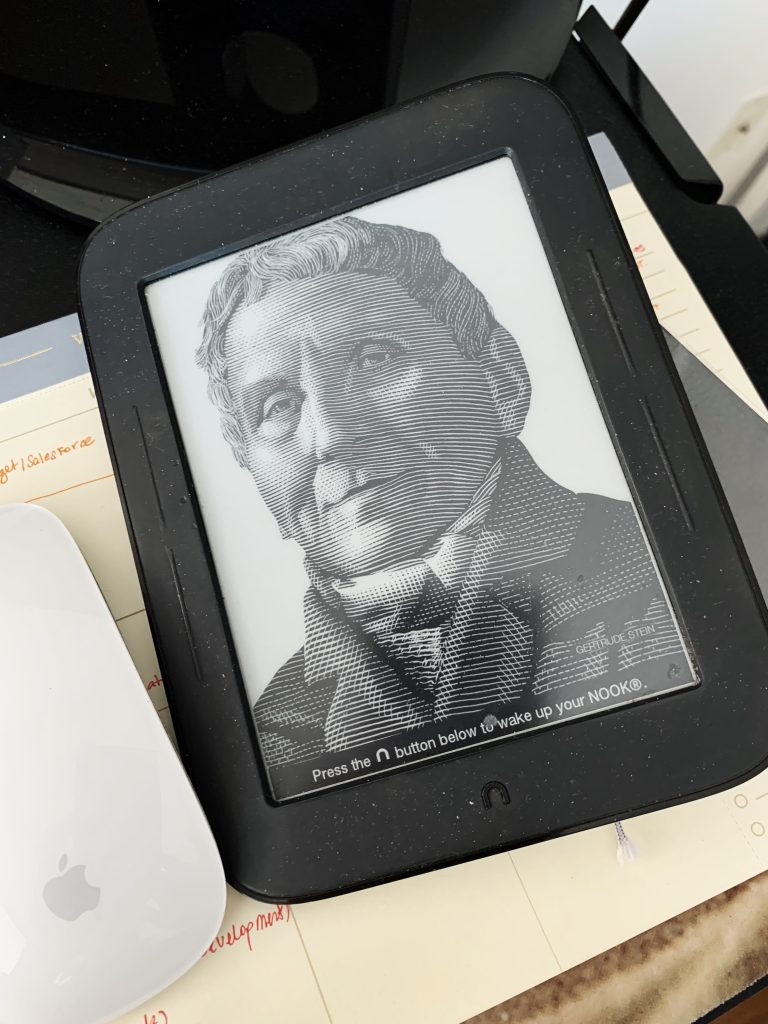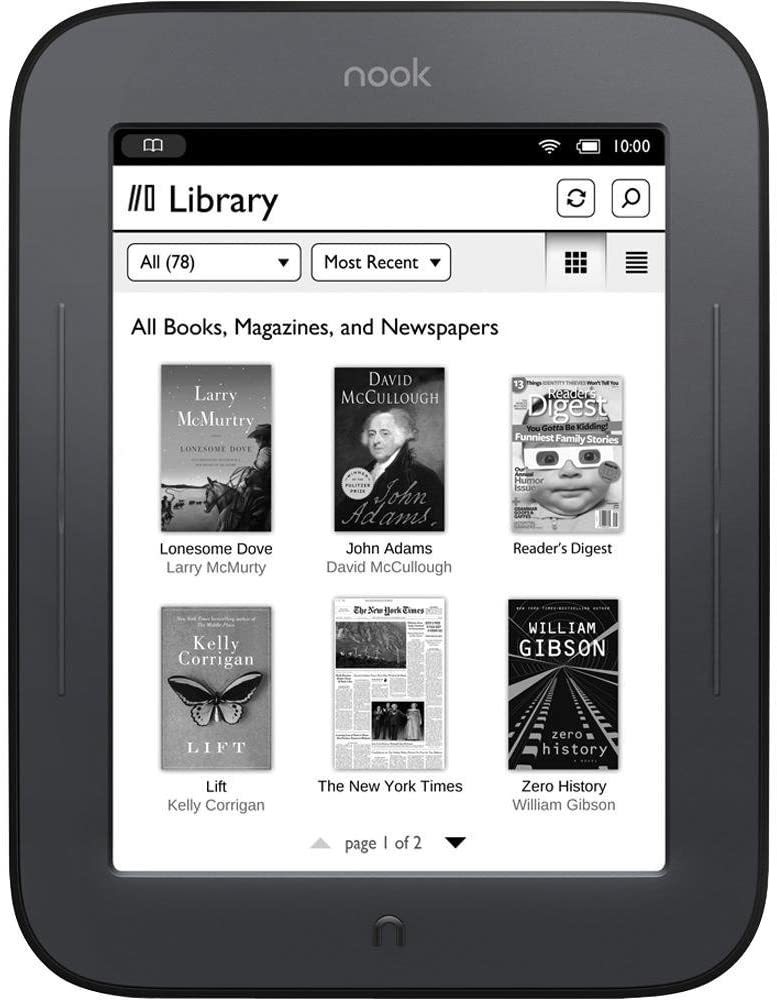Ahh, my Nook Simple Touch. Could I consider an ebook reader as an old friend? The Nook helped me discover literary wonders over the past decade. I read a bunch of great books on this thing.
I can’t believe this little ebook reader was released in 2011. This product faced off with the Amazon Kindle e-reader as its main competitor.

Although this version of the Nook Simple Touch is considered too outdated, it still does an excellent job as a “simple” e-reader. Sure, it is slower than my newish Kindle Oasis, but its classic design, sleek interface, and ability to support external storage have won me over all these years.
1. Beautiful Minimal Design and Page Turning Buttons
The Nook Simple Touch’s minimal design is timeless. It includes an anti-slip matte rubberized coating ergonomically designed for one-handed reading. This thing never slipped my hands on many subway commutes.
Ultimately, the now well-regarded page navigation buttons are the best! Two striped button inlays on both sides of the device provide a tactile way of moving between pages. This feature is an excellent example of what a thoughtful design could do to enhance the user experience.
Page navigation buttons are now reserved for more expensive e-readers like the Kindle Oasis nowadays! Current basic Kindle device offerings have no page-turning buttons, making users rely on on-screen taps for navigation. The Nook Simple Touch provided this option from the get-go! The touchscreen works great, but buttons are better, especially when reading a book during daily commutes when your other hand is occupied with holding a cup of coffee or a bag.
2. External Storage Feature
The Nook Simple Touch comes with a standard 16GB storage. However, the crème de la crème feature of this e-reader is the now rare external storage feature. Gone are the days when this was a standard device feature enabling users to expand their storage. Instead, companies use this ploy to create and differentiate their product line and market varying storage sizes for a hefty price (ahem, Apple *cough*). The Nook Simple Touch has a side-loading MicroSD card slot, so I put in a 32GB MicroSD card – voilà more storage. With this card, I can download all my ebooks, save my PDF documents, and read them at my convenience. Why can’t all devices have external storage?

3. Simple User Interface
The menu’s simplicity on the Nook Simple Touch appeals to me because it is minimal and intuitive. When I start it up, it displays the book I am reading, displays navigation to my library, and, via a WiFi connection update, shows the bestsellers list via the Barnes & Noble website. It’s free from annoying ads.
Starting up the device requires an unlock screen to swipe, automatically showing the page where you left off previously – convenient and thoughtful.
Tapping right on the screen takes you to the next page, while tapping left will move it back to the (or a) previous page. A long press on the screen will show the settings and other functionality, such as text resizing, a find button for searching, etc. Also, the reader has another added button since the Nook logo is like a “home” button that takes you to the front page of your library.
Farewell, old friend
Unfortunately, since I’ve had my Nook Simple Touch for a good decade, it has dead pixels the size of a small mole at the bottom of the screen. The e-ink pixels could no longer refresh that area, leaving a dark spot. I could be the one to blame; perhaps I bumped the screen somewhere while carrying it in my bag. Thankfully, that dark spot does not block any book content, so it is still very usable. The other thing is that this device shows its age with its slower processor. It takes some time to load pages. However, it’s still pretty much usable, and I’ll probably continue to use it now as a secondary e-reader.